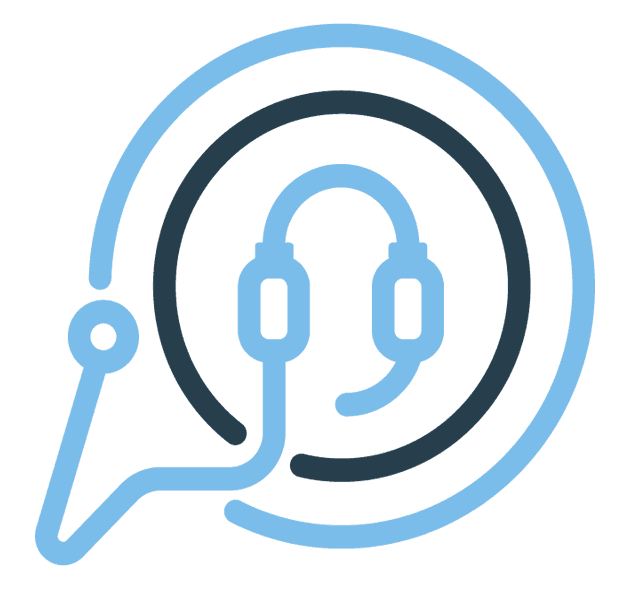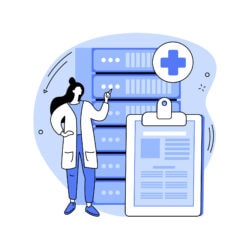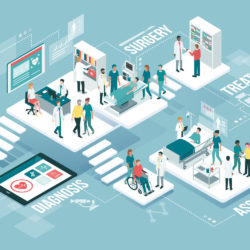What Is EMR Integration?
The definition of EMR integration is the process of connecting an Electronic Medical Records system with other healthcare systems or technologies to allow for a smooth exchange of medical data. This interchange enhances interoperability among healthcare tools, allowing providers to easily share and access patient information across multiple platforms. It can revolutionize healthcare delivery, improve information accessibility, and result in better patient care.
The integral functionalities of an EMR system include features such as charting, patient portals, electronic prescribing, order entry, and decision support. An EMR system connects with third-party services and tools offering an array of other healthcare functionalities, thereby streamlining the medical data flow and elevating the interoperability amongst these digital health tools.
How EMR Integration Works
Electronic medical records are undeniably critical to modern digital healthcare, rendering a consolidated, standardized collation of a variety of patient information. Utilizing automated program interfaces (APIs), services like these can directly access data from EMR platforms, which allows for a patient contact experience that feels innately integrated with your practice’s operations, rather than outsourced.
EMR integration helps to bypass this potential for human error, which is a significant concern in modern healthcare provision. The enhancement of healthcare data interoperability and the streamlining of patient record management are the main benefits delivered by EMR integration solutions. This technological application is a cornerstone of digitized healthcare, bolstering patient-centric care through the expedited availability of data and resulting in more accurate, data-driven treatment decisions.
Types of EMR Integration Tools
EMR integration tools are vital to many aspects of healthcare practice, with various types serving a wide array of needs. Here are some of these specific tools, each providing unique benefits to healthcare practitioners:
- Medical Answering Services: These integrated services provide practitioners with significant benefits beyond just patient satisfaction. They promote efficient operations, reducing unnecessary expenditures related to staffing and administrative work. EMR integration solutions for medical answering services lead to a more streamlined, efficient, and patient-centric practice.
- Laboratory Information System (LIS): This tool has drastically simplified traditional testing procedures, replacing handwritten results and queues at laboratories. Today, thanks to LIS, patients can directly visit laboratories with their doctor’s orders and receive results via their private accounts.
- Clinical Trial Management System (CTMS): Utilized in biotechnology and pharmaceutical companies, CTMS is crucial in managing clinical trials and research. Integration of CTMS with EMR keeps physicians updated about their patients’ participation in clinical trials, ensuring safety and preventing treatment conflicts.
- Medical Billing Integration: This tool primarily focuses on managing revenue cycles within healthcare facilities. By integrating billing functions, you’re likely to increase reimbursement and streamline financial processes.
- Payment Integration: Merging payment processing systems together with EMRs creates a seamless and convenient billing experience. Payment integration can improve collection rates, reduce risk, enhance compliance, and facilitate the acceptance of various forms of electronic payments.
- Telehealth Integration: Telehealth applications have risen to popularity due to their virtual nature, especially during the COVID-19 outbreak. EMR integration tools for telehealth provide a bidirectional interface, enhancing data exchange between systems.
- Medical Device Integration (MDI): Particularly used by ICU and OR departments in clinics, MDI facilitates the transfer of vital data from devices like monitors, smart beds and finger cuffs to the EMR, creating an automated, precise record of patients’ vital signs.
- Remote Patient Monitoring (RPM): RPM integration with EMR enables physicians to read patient-generated data directly from the EHR, avoiding data duplication and reducing the risk of medical errors. Consequently, it promotes more effective treatment decision-making, cost savings, and encourages direct patient engagement in healthcare. It also speeds up patient onboarding and provides practitioners with an easy-to-access comprehensive overview of critical patient data.
Related article: Best EMR Systems for Integrated Tools.
Valuable Advantages of EMR Integration in Healthcare
EMR integration is a crucial facilitator of healthcare data flow, fueling the seamless transition of critical information – such as patient histories, radiology results, allergies, and medication data – from one medical facility to another. This integration empowers interconnected networks of hospitals to smoothly share and update patients’ data across diverse systems with impressive precision and immediacy.
In the realm of healthcare management, the exchange of patient data can be incredibly transformative. It enhances interoperability, which essentially benefits all primary stakeholders in a patient’s care setting. However, the process of integrating tools with access to sensitive data, PII and PHI, can be daunting due to difficulties accessing the necessary information systems and crucial patient health details.
Why Use EMR Integration Solutions?
- Government Incentives: Most government programs provide incentives to clinicians for adopting EMR systems, encouraging interoperability and improved patient outcomes.
- Real-time Data Access and Analytics: EMR integration tools allow 24/7 access to patient records for both doctors and patients, ensuring a centralized, easily accessible data repository.
- Reduced Data Entry: By eradicating the need for repetitive data transcription, EMR integration solutions reduce errors and unnecessary time consumption.
- Increased Practice Productivity and Improved Patient Care: EMR systems promote efficient access to patient history and streamline care coordination, thereby enhancing practice productivity and patient outcomes.
- Enable Innovation: The continuous flow of data facilitated by EMR integration tools, including data from IoT or IoMT (Internet of Medical Things), creates prime opportunities for innovation.
- Patient Satisfaction: EMR integration solutions let patients interact with scheduling, make online payments, set reminders, and provide feedback, contributing to improved patient satisfaction and care experience.
Emerging policies, such as those devised by the ONC for HIT (Office of the National Coordinator for Health IT), have been developed to navigate these challenges, promoting accessibility and data transparency in efforts to improve holistic care. FHIR (Fast Healthcare Interoperability Resources), one such ONC policy, when integrated with EMR, makes data access and sharing across platforms more straightforward through the incorporation of API (Application Programming Interface).
Related article: Top 10 Cloud Tools to Optimize your Healthcare Practice.
PatientCalls | Connect Call Management with EMR Data
PatientCalls has designed specialized call directive plans that sync smoothly with your team’s requirements, creating a seamless extension of your medical office’s front desk. Their customizable message delivery solution efficiently routes messages to designated personnel or platforms within your organization, as per your specifications. This minimization of “double handling” of personal health information fosters a more streamlined message flow, ensuring both software and staff access the necessary information when required, without unnecessary confusion or disruption.
Learn more about our custom EMR integration services.
Resources
- Healthcare Information and Management Systems Society, “Interoperability in Healthcare,” 2023
- HealthIT, “What Is Information Blocking and to Whom Does It Apply?,” 2023.
- I.S. Partners, Robert Godard; “Interoperability & Compliance: Are They Pulling Healthcare in Different Directions?,” February 2023.
________
link from:
https://www.patientcalls.com/blog/emr-integration-process/







